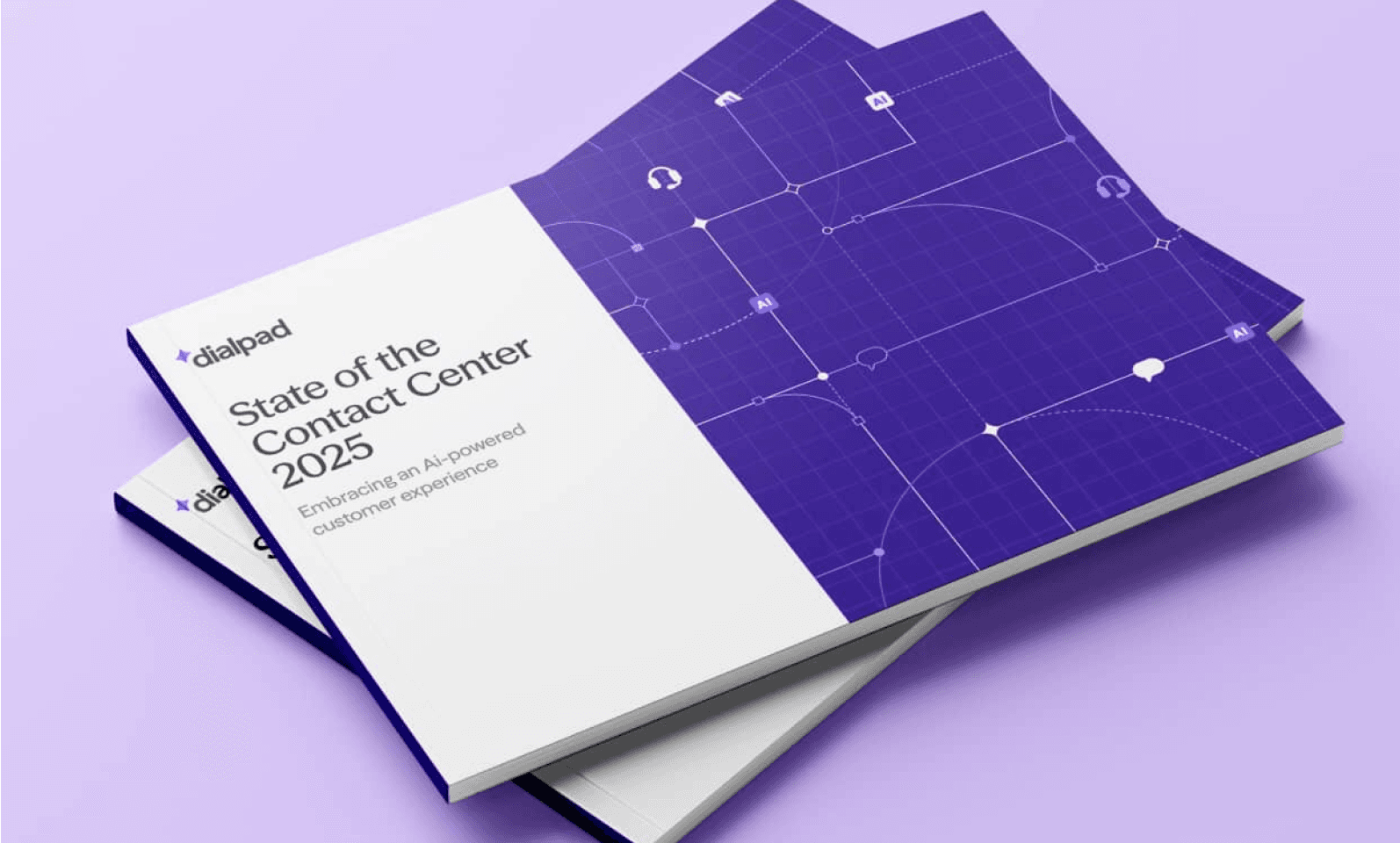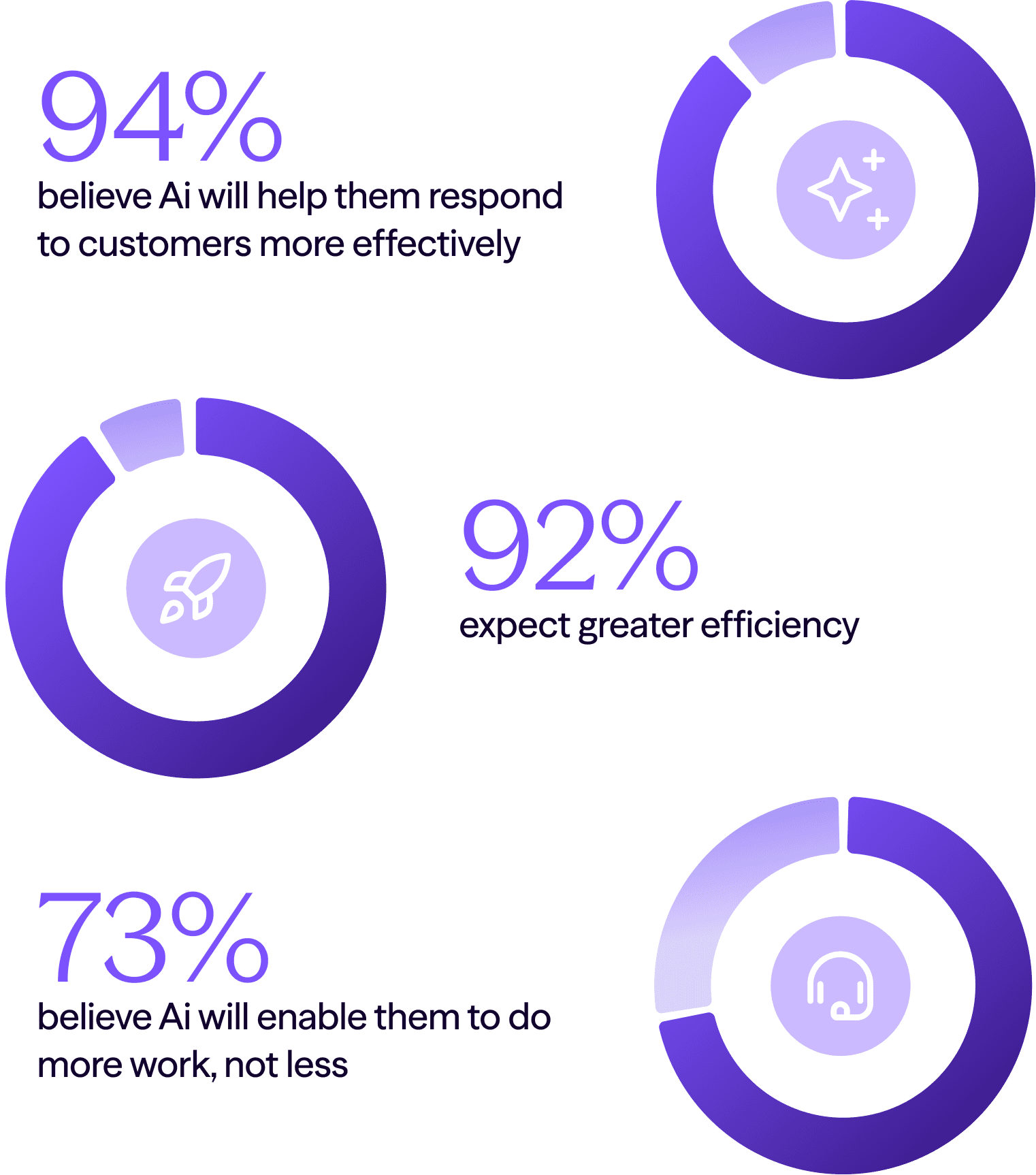
Tags
Share
One thing you notice when you work in Ai software development is that this world moves fast. A springtime experiment is table stakes by autumn. Yet even as lots of vendors are moving onto the next big thing (agentic), lots of companies are still trying to figure out the current thing (GenAi).
At Dialpad we’re in the middle of this cyclone. We were early to the Ai race and we remain committed to offering one of the industry’s most advanced Ai-powered platforms for customer communications, today and tomorrow. But we’re also committed to helping our customers manage this challenging transition, and that requires understanding not just where they need to go and how, but where they’re coming from and why.
Ai’s moving fast. Can contact centers keep pace?
For The State of Contact Center 2025, we spoke with more than 600 contact center agents, supervisors, executives, and buyers, and listened carefully while they talked about how their industry is changing, and what they see coming in the future.
My own most interesting takeaway might be the similarities and differences between how contact center representatives and supervisors see this new era; the two groups have differing views of what makes customer interactions good, what strategies will achieve that, and how to use Ai to enable those strategies. Our respondents did share broad optimism:

But we also found widespread apprehension: 69% of contact center workers we surveyed worry that Ai could negatively impact customer experience due to technical glitches or impersonal interactions, and 55% are concerned about customer pushback. And despite high usage—95% of workers are already using Ai in some way—more than half say they don’t feel confident in their skills. Supervisors, in particular, fear being left behind.
How to find that crucial balance between Ai efficiency and human empathy? The key to using the coming wave of Ai to improve operations while raising the bar on customer experiences lies with understanding both where your team is today and the challenges they’ll face tomorrow. The companies that succeed in this transformation will have given their teams both the right Ai tools and the guidance they’ll need in order to use them effectively.
How will this play out?
Stay tuned—we’ll be updating this benchmark annually and publishing lots more original, ongoing research that captures the real-world complexity of Ai transformation in the months and years to come. We’re glad to have you on the journey with us.

